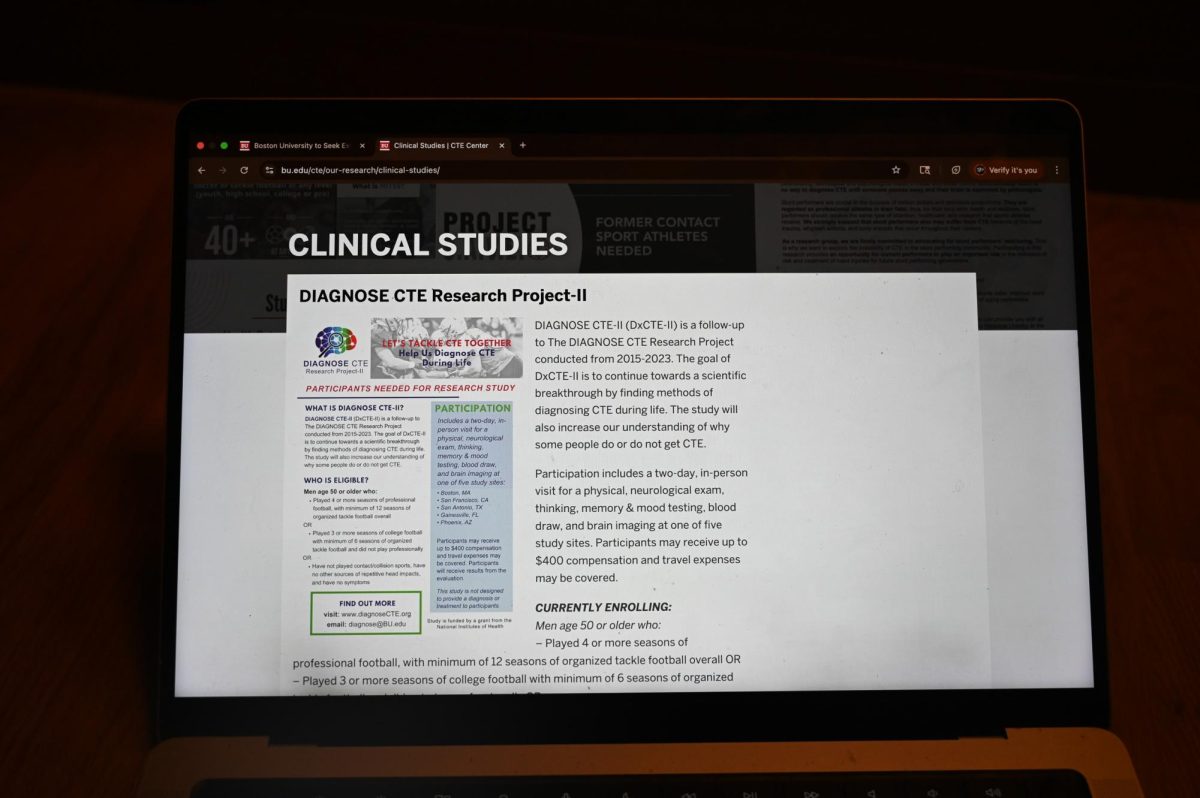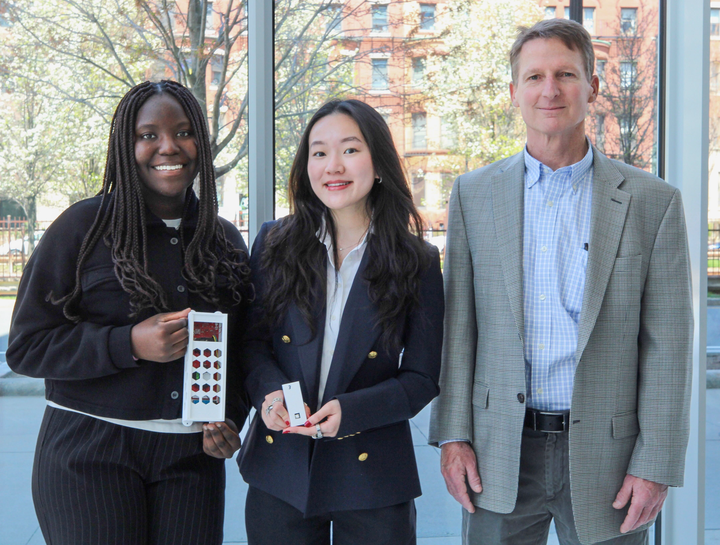In the on-going battle against HIV/AIDs, vaccine developers are continually trying to find ways to promote immunity from this devastating virus.
Fortunately, researchers at The Scripps Research Institute and the International AIDS Vaccine Initiative have developed a new vaccine-design approach. The research team — which published its report in the March 28 edition of Science Express — engineered an artificial immunogen, or substance that induces immunity, to elicit an antibody response that could be effective against several strains of HIV.
HIV/AIDS
According to the National Institute of Allergy and Infectious Diseases, human immunodeficiency virus (HIV), the precursor to acquired immune deficiency syndrome, or AIDS, harms an individual by destroying CD4 positive T-cells, which are essential to protecting the body from disease.
HIV infects more than 50,000 individuals in the U.S. annually, according to the Centers for Disease Control and Prevention and, cumulatively, UNAIDS estimates that there are approximately 34 million people worldwide living with HIV.
While efforts to control the spread of HIV have had some success, development of a protective vaccine is a global health priority. Researchers said producing such a vaccine should be possible because about 10 to 20 percent of HIV-infected individuals produce antibodies capable of neutralizing most known strains of HIV. If healthy people produced these antibodies, they would likely be protected if exposed to HIV. However, current vaccines have failed to elicit this kind of protective response.
The research
The current research began as the brainchild of William Schief and TSRI graduate student Joseph Jardine while at the University of Washington in 2010. Originally a side project, the research began to flourish as Schief and Jardine hypothesized why vaccination efforts are failing. One reason, they said, is that the naïve B-cells that can generate protective antibodies fail to recognize HIV Env, the protein that enables HIV to infect cells. Jardine said traditional vaccines use either killed virus or pieces of virus, both of which will be unable to activate the appropriate germline B-cells.
“To address this problem, we decided we needed to take a new approach to designing vaccines, and directly target the VRC01-class germline antibodies,” Jardine said.
Researchers said there is no vaccine that produces broad neutralizing immunity, or protection against multiple types of HIV, but previous work has shown that 20 percent of patients can elicit antibodies that neutralize a large number of strains. Schief and Jardine looked at these antibodies to determine why vaccines were unable to reproduce the same types of antibodies.
“We asked ourselves, ‘Is there a natural, measurable affinity at germline?’” Jardine said, with regard to the interaction of existing immunogens with new or naïve B-cells. “‘Can we modify [the immunogen] and tailor it to the human body and have it be easily recognizable, instead of using a direct replication of the disease?’”
Developing a vaccine
Using a dead virus or a replication of a virus is a common technique for vaccine development, but has proved ineffective in HIV vaccines, which motivated Schief and Jardine to explore alternatives.
Thus began the design phase, where Jardine used a protein modeling software program called Rosetta to design a close mimic to the HIV Env protein found on the virus surface. Jardine tweaked it enough to interact with naïve B-cells, thought to be precursor of a class of effective antibodies.
“In the design phase, I modeled what I thought the precursor antibody might look like, but I found reasons why there might be very weak binding to HIV Env,” Jardine said. “We needed to make this interaction better, so using computational modeling, we identified dozens of mutations on the side of HIV Env, with millions of potential combinations.”
Jardine then used several techniques to identify which mutations would produce tight binding to the germline antibodies. However, the design phase was just the first step.
Jean-Philippe Julien, a senior researcher at TSRI, used X-ray crystallography to determine the structure of the designed immunogen, as well as the structure of the germline VRC01 antibody, alone and once bound to the immunogen. X-ray crystallography is a method that uses a beam of X-rays against an array of molecules to reveal its structure, which Julien used to look at the interaction of the immunogen and antibody at the atomic level.
“We understood the extra contacts that were being made; it helped us to understand at an atomic level why the immunogen was so good at eliciting a specific naïve B-cell response,” Julien said.
The third and final component of the work was performed by Sergey Menis, a visiting graduate student, who took the molecule and created an array on top of another molecule. This mimicked the form of a virus with 60 clustered copies of the immunogen, called a “60mer nanoparticle.” Jardine explained that displaying the immunogen in an array would increase the chances of B-cell interaction.
“There is evidence that the body likes multiple copies better and this was validated by several techniques, indicating that it is especially useful for an immunogen that is inducing a response in the early phase of B-cell development,” he said.
“This is very cross-collaborative research,” Julien said. “We are looking for a preventative vaccine, that’s the ultimate goal…Research has shown that using a natural HIV strain does not initiate the antibody response we’re looking for. We need something that is more reliable.”
However, both Jardine and Julien acknowledged that this work is still in its early stages. Even if this new artificial immunogen is successful at initiating a broad neutralizing antibody response, the research team will need to find a way to carry the process all the way to maturation.
“This is just the first step … we need to experimentally validate this before we can go any farther,” Jardine said.
Other concerns
“This is really elegant, beautiful work,“ said Dr. Lee Wetzler, a professor of medicine and microbiology at Boston University and an expert in vaccine development. “However, the question is, ‘Is this enough?’”
Wetzler said he is concerned that the researchers have not given enough thought to the role of T-cells in the production of HIV-protective antibodies.
“You need to take a multi-arm approach,” Wetzler said. “This innovation only stimulates B-cells and does not think about T-cells. You’re not likely to get a simulogic immunity, as a result.”
Jardine and Julien acknowledged that the current study does not describe strategies for eliciting T-cells.
“We understand that there are a lot of players in building immunity and we can’t look at them only in isolation,” Jardine said.
He said researchers need to focus on eliciting a broad neutralizing antibody response with B-cells first because B-cells are driving the work in successful vaccines.
“However, we are currently working on engineering protein sequences that can help promote T-cell help, but that was beyond the scope of our initial publication,” he said.
Wetzler was optimistic despite his concerns.
“This is really nice work, but it is incredibly early on,” he said. “It’s important to move away from testing on mice, even humanized mice, because the response will be different than in humans.”
However, moving directly to human testing is a difficult endeavor. Jardine noted that while it was the goal, they were not looking to do that immediately.
“Validating this immunogen has proven to be challenging, because we designed it to target a human germline antibody and there are no animals that have that same antibody,” he said. “However, we are optimistic that we can use engineered mice to test proof of principle. Before going directly to humans, we want to exhaust all the other possible options.”
Reactions from the BU community
Boston University students were pleased to hear that there were such innovative developments in HIV vaccine development.
“I think we’re going in the right direction … and this could be positive for HIV diagnoses because the previous therapies, while helpful, have negative side effects,” said Rachel Glick, a College of Communication senior. “And so, what comes to mind is the HPV vaccine which resulted in prevention.”
Scott Pheifer, a School of Management senior, said that this work seems promising, but argues that there is more to be done.
“We need more private investment in mapping the virus to see how we can get ahead of the problem,” he said.
He said he thinks it’s particularly important to establish immunity in infants and young children to avoid future generations with high prevalence of HIV.
College of Arts and Sciences junior and biology major, Kelly Hoyer, acknowledged how difficult it is to develop a vaccine that can target various HIV strains.
“It’s hard to get a collective treatment … this breakthrough is exciting,” she said. “It shows how hard they’ve been working on this.”
























































































































